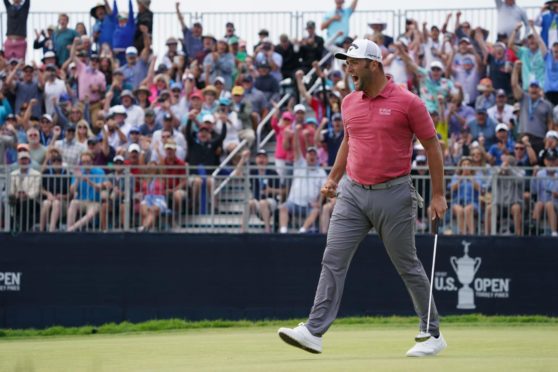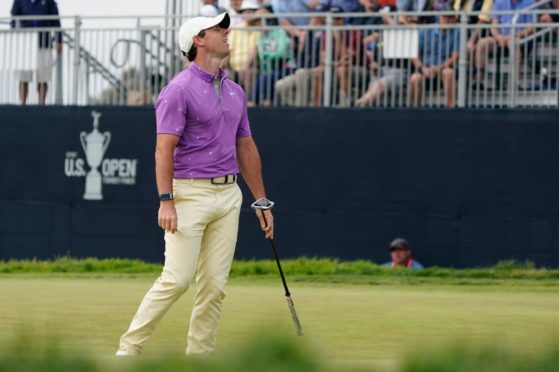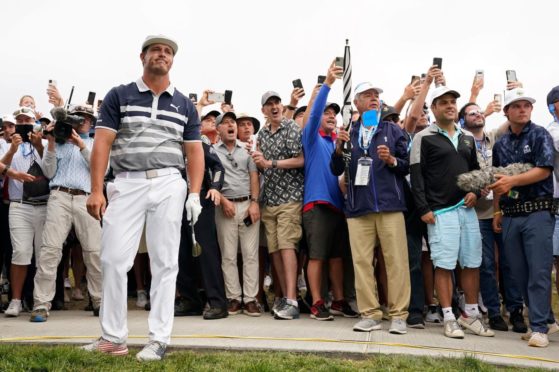In our never-ending search for a definite and conclusive REASON why everything happens, there were a couple to pick from with Jon Rahm’s US Open victory at Torrey Pines.
Karma, for a start. Rahm was denied a seemingly easy victory in his last event, the Memorial, when he tested positive for Covid-19 with a six-shot lead on the Saturday night. That after a primary vaccination jab, as well.
Or maturity. Rahm has what passes for a “volcanic” temperament in golf, and many thought his over-emotional style got in his way in the past. The recent birth of his son has instilled him with a perspective and desire to be more circumspect.
Spain’s first US Open champion, and the first man since Tom Watson in 1982 to win the title birdieing the last two holes, seemed to acknowledge both of these strained media narratives in the wake of his one-shot victory over the luckless Louis Oosthuizen.
An inevitable win by a class player in top form
But surely the truth is that Rahm still only 26, is a very, very good golfer and it was simply inevitable that he was going to be a major champion. That it happened at Torrey Pines, a favoured venue for him on the PGA Tour, and in his current form – he didn’t get six shots ahead at the Memorial by accident – is absolutely no surprise whatsoever.
It’s a bit more prosaic than Karma and Daddy-maturity – especially on Fathers’ Day – but overrides both.
The Covid-19 element of Rahm’s victory is, it seems, a neat full-stop on the pandemic’s disruption in golf. The Open next month will play out to crowds of 32,000 a day – it was 9000 a day in San Diego. Whether that’s altogether wise or not, we seem to be emerging.
A major champion straight out of self-isolation seems fitting. Rahm was asymptomatic, unaffected physically and but for the disappointment of losing out at Memorial, mentally okay. There were far more serious things going on in the world, he correctly pointed out.
That emotion was and is good
As for his temperament, I never saw much wrong with his explosions of emotion – such as they were – and there were plenty of them through his outstanding 67 on Sunday. That he’s not robotic and utterly self-contained like so many modern products of the US college system is to be treasured.
That emotion is redolent of his hero Seve and other Spanish/European players. It was what propelled him to his career highlights so far. As I recall, it certainly was what lifted him above Tiger Woods in the singles at the 2018 Ryder Cup in Paris.
And the idea that immediate maturity is suddenly instilled by the birth of your first child? Yeah, right, and I speak from personal experience.
Rahm is a quality player, was in searing form – he went to World No 1 as a result of his win. Everyone was sure he would break through at the majors at some point. With the carnage happening on the back nine at Torrey Pines, it was the perfect time for him.
There clearly will be more. He has four top 10s at the Masters and two at the PGA. And his superior ball-striking suggests that one of the Open venues should be well within his range as well.
Torrey Pines a classic test? Do me a favour
Is there a longer (623 today), straighter hole in all of golf than Torrey's par-5 9th? pic.twitter.com/EsP5684VQS
— Sean Zak (@Sean_Zak) June 17, 2021
There were so many top level contenders at Torrey on the final day it confirmed for many that the course had proved itself. How could it not be a classic major test with a leaderboard like that?
Yeah, not having that either. The Ryder Cup has conclusively proved time and again you don’t need a great course for great drama. Great leaderboards happen at just about every major. Top players get up for these championships – it happens every time, as it should.
Torrey Pines is a dreadful course of long, featureless holes. The 620-yard, straight-as-a-die par-five ninth is possibly the worst-designed hole in major golf. It’s fine as a challenging annual tour stop, but we don’t take majors to Scottsdale or TPC Deere Run.
The USGA – and R&A – has been guilty of letting distance get out of hand. They’ve eviscerated some of their classic venues and the inevitable result is awful slogs like Erin Hills, Chambers Bay and Torrey.
It’s the Country Club in Boston next year, a super-traditional USGA venue. Be interesting to see where we are with the distance issue then.
Encouragement for Rory, change of plan for Bryson?
So many top names got close on Sunday there will be reverberations, but they’re not uniformly negative.
If you were reading social media you’d think Rory McIlroy was in the locker room afterwards in the foetal position.
But they can’t have it both ways. McIlroy was in career freefall according to some a month ago. This was his most sustained challenge to actually win in a major since maybe Carnoustie in 2018.
He should really be massively encouraged that the work with Pete Cowen is clearly progressing well. I’m for a few bob on his nose for the Open at Sandwich.
Bryson DeChambeau, on the other hand, took a huge blow. At the ninth he was leading and seemingly set to smite all-comers on his way to a second successive win at the major that seems to be set-up for his whack-away-and-damn-the-consequences style.
Instead it all unravelled and he came back in 44. One imagines the USGA heaved a sigh of relief as he finally found spots in their rough that were unplayable.
DeChambeau – and others – clearly hit towards the rough intentionally all week, often into spectator areas without a word or even signal of warning. That was disgracefully dangerous.
That’s four scientifically-derived Bryson strategies in a row at the majors that have downright failed. When does this relentless experimenter change tack again?


